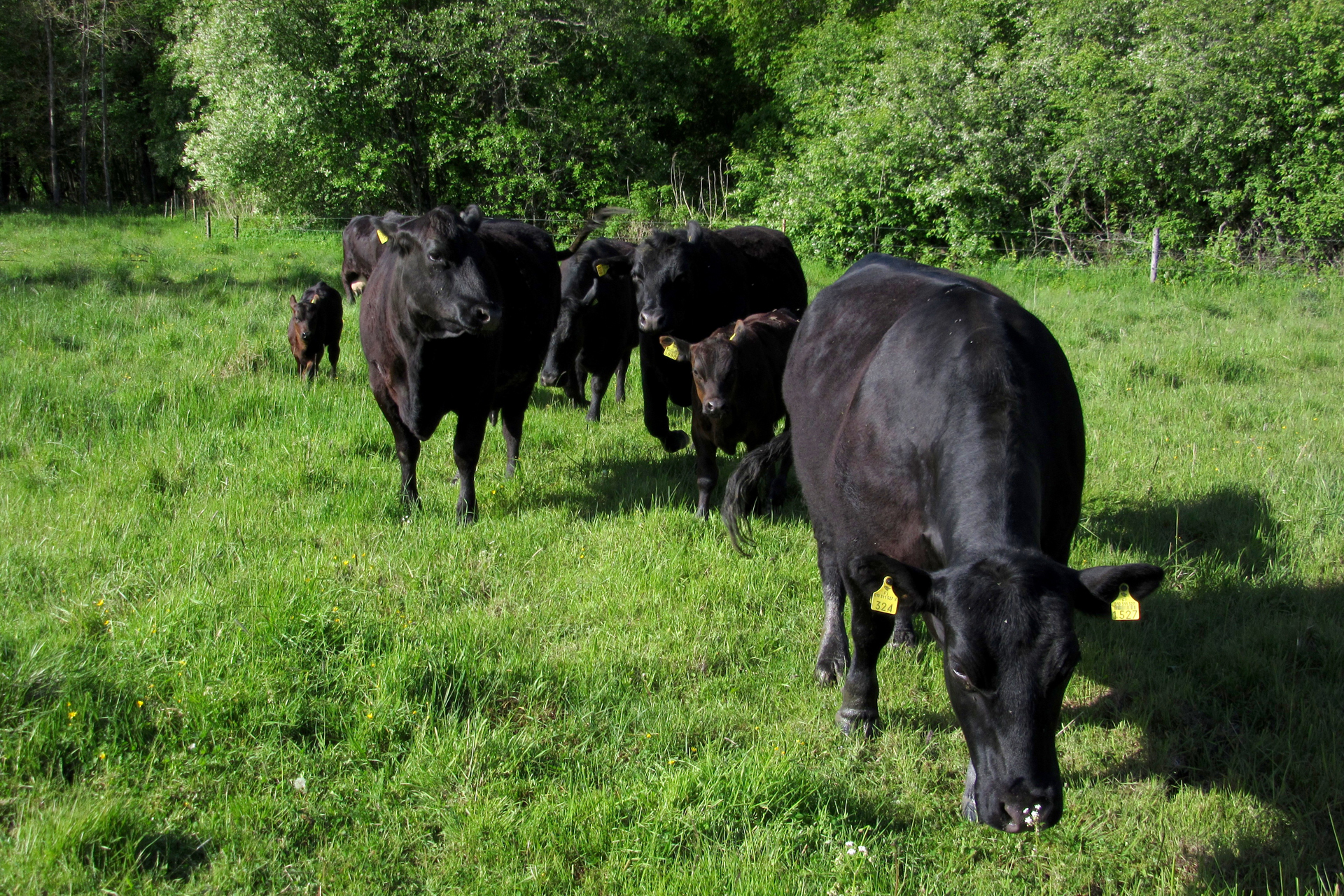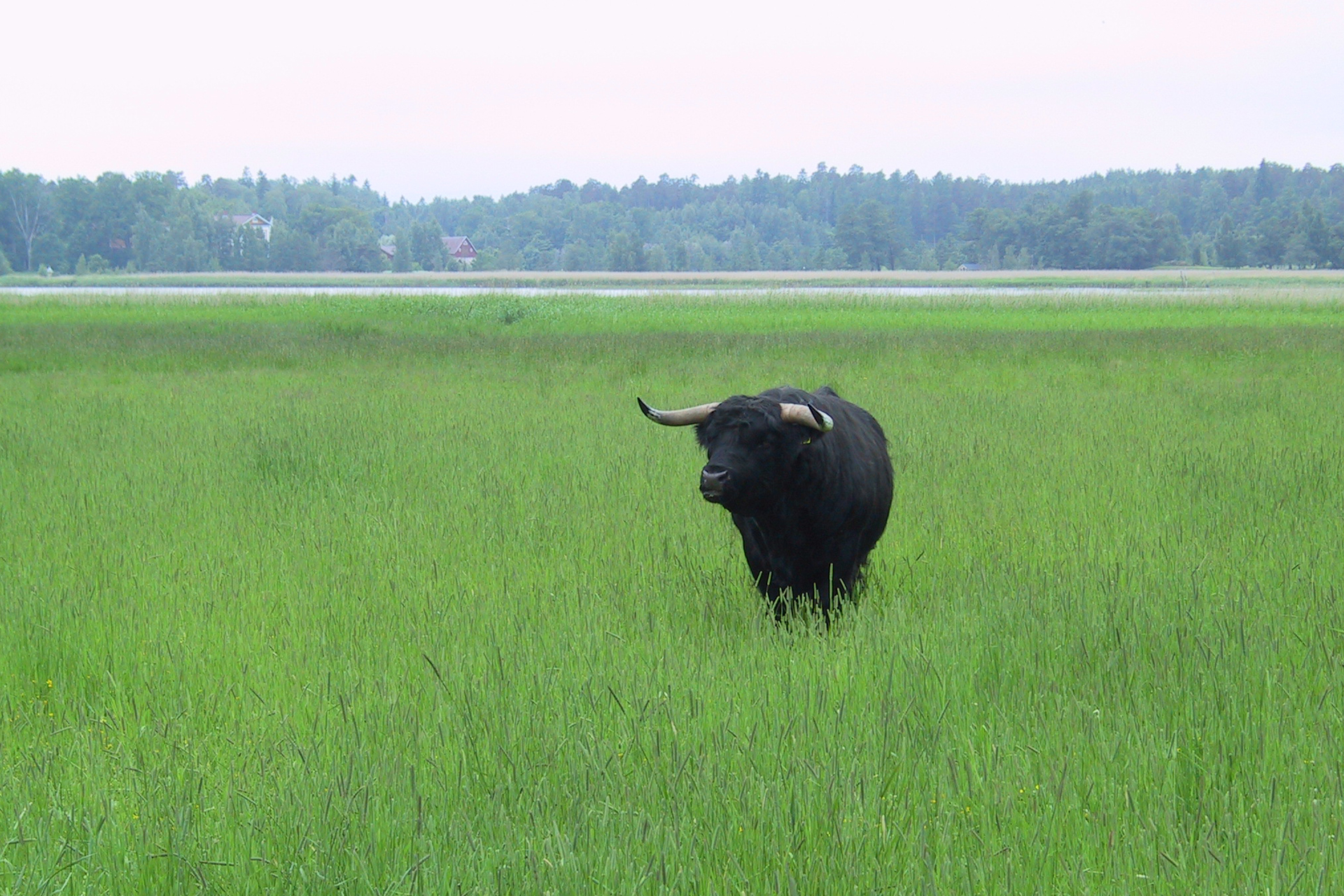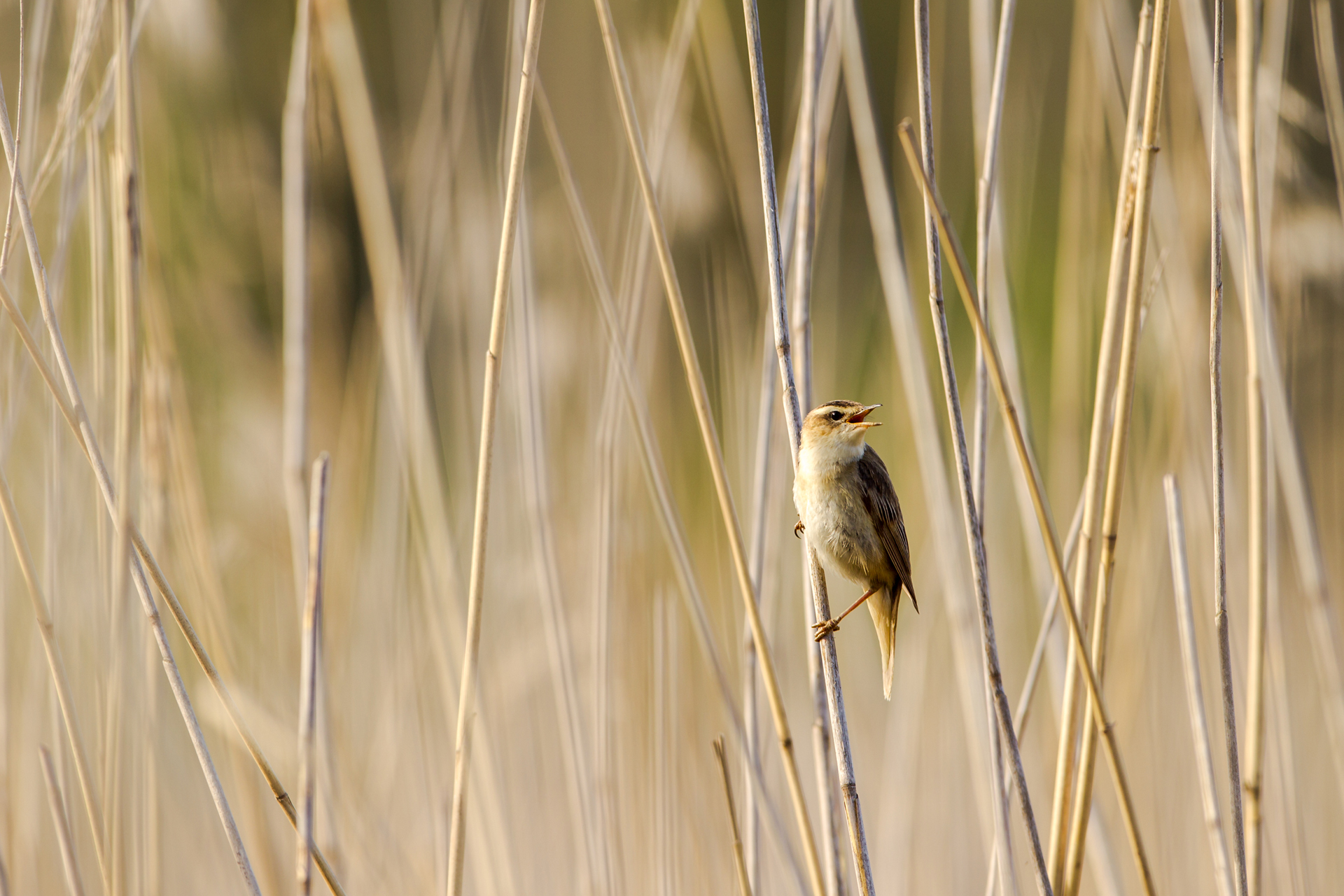Traditional landscapes managed by cattle
Coastal meadows have been formed as a result ofsea level variations and ice shoves, mowing and grazing. The end result is an open, diverse habitat favoured by demanding and rare meadow plants that need plenty of sunlight. The most representative coastal meadow on Ruissalo is located between the pedestrian and cycling road leading to Kansanpuisto and the sea.
Many formerly open coastal meadows have overgrown over the years. This happens gradually, with the low meadow vegetation first being replaced by tall grasses, followed by bushes and eventually a young forest. The open meadow thus turns into an entirely different habitat, with the valuable species typical of meadows disappearing in the process. The reasons behind the disappearance of meadows include a lack of mowing, reduced pasturage, and nutrient input from the air and the sea. Meadows are protected by clearing and continued pasturage and mowing. Removing or thinning trees increases the amount of sunlight, while grazers keep excess vegetation in check by eating. While they eat, their hooves also till the soil just right. The increasing light and spots of open ground cause the range of species to increase and meadow species to return. Cattle thus plays an important role in nature conservation, in addition to which the practice revitalises traditional grazing culture.


